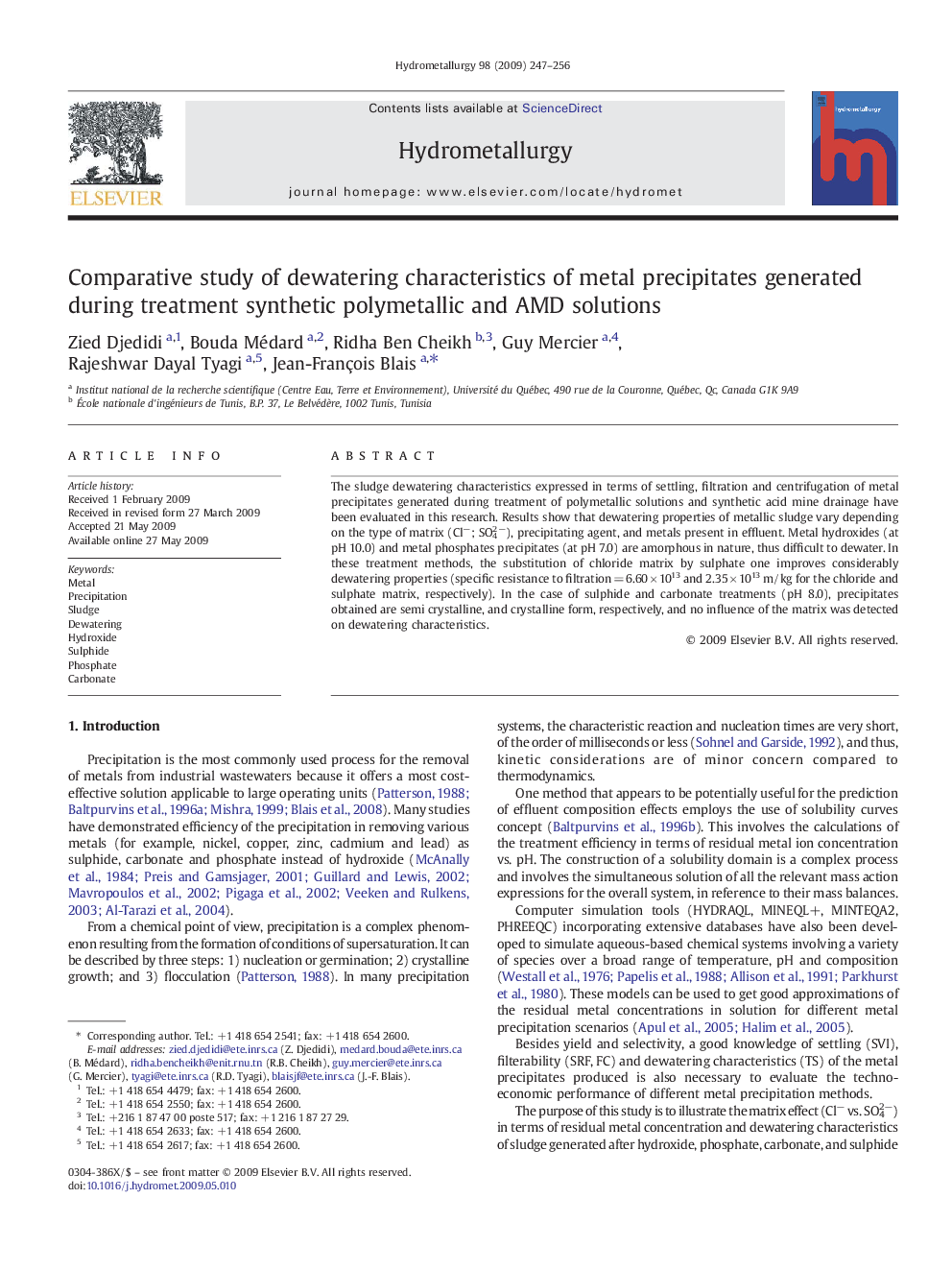| کد مقاله | کد نشریه | سال انتشار | مقاله انگلیسی | نسخه تمام متن |
|---|---|---|---|---|
| 213155 | 462084 | 2009 | 10 صفحه PDF | دانلود رایگان |

The sludge dewatering characteristics expressed in terms of settling, filtration and centrifugation of metal precipitates generated during treatment of polymetallic solutions and synthetic acid mine drainage have been evaluated in this research. Results show that dewatering properties of metallic sludge vary depending on the type of matrix (Cl−; SO42−), precipitating agent, and metals present in effluent. Metal hydroxides (at pH 10.0) and metal phosphates precipitates (at pH 7.0) are amorphous in nature, thus difficult to dewater. In these treatment methods, the substitution of chloride matrix by sulphate one improves considerably dewatering properties (specific resistance to filtration = 6.60 × 1013 and 2.35 × 1013 m/kg for the chloride and sulphate matrix, respectively). In the case of sulphide and carbonate treatments (pH 8.0), precipitates obtained are semi crystalline, and crystalline form, respectively, and no influence of the matrix was detected on dewatering characteristics.
Journal: Hydrometallurgy - Volume 98, Issues 3–4, September 2009, Pages 247–256